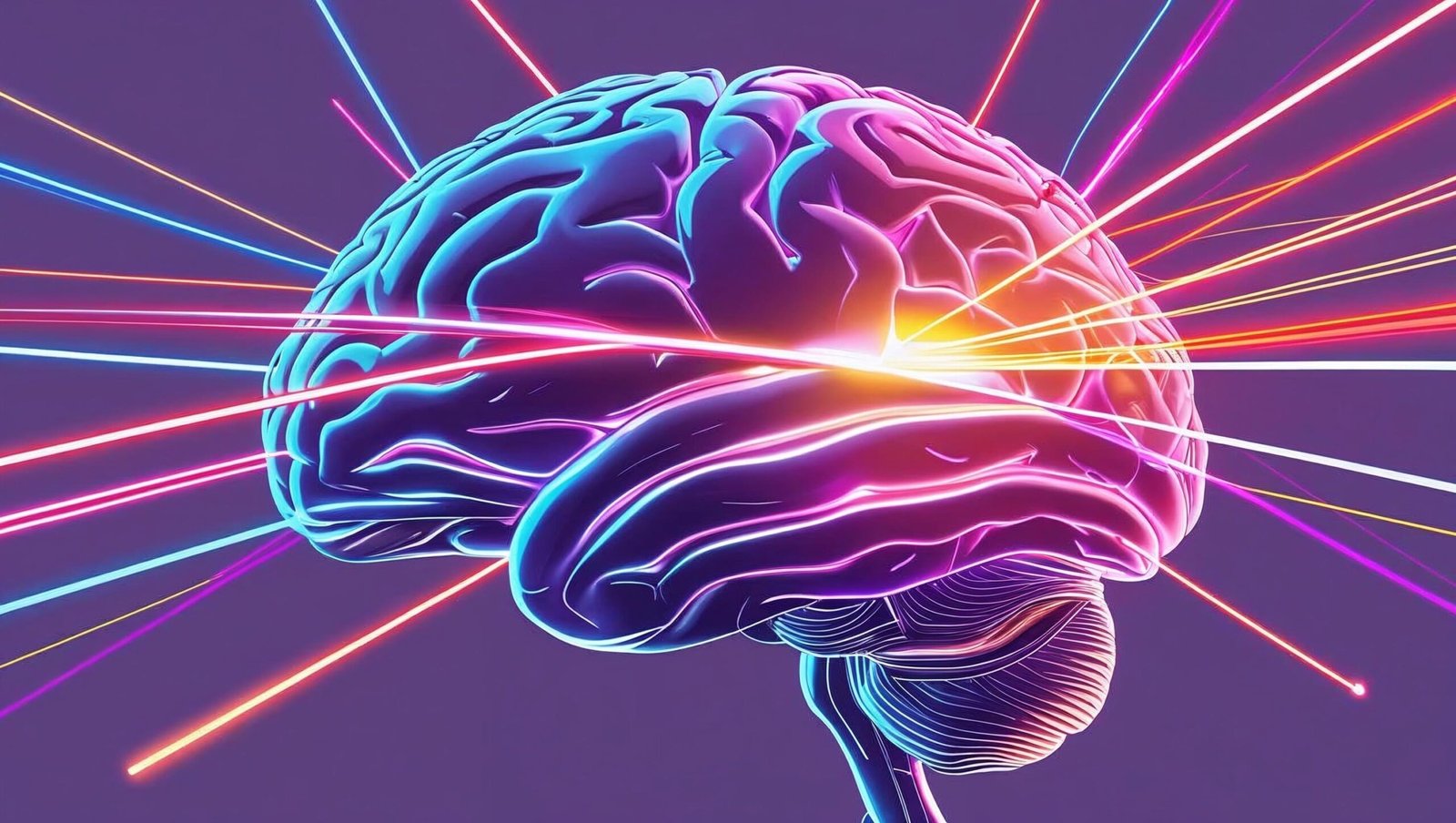🧠 Introduction: The Need for Deep Attention in a Distracted World
In a world brimming with constant notifications, distractions, and mental clutter, Hyperfocus by Chris Bailey emerges as a guiding light for individuals striving to reclaim their attention. This book is not just another productivity manual—it is a deep exploration of how our mind functions, how attention shapes our reality, and how to channel that attention to achieve excellence. In this comprehensive review of Hyperfocus by Chris Bailey, we’ll dissect the author’s insights, research-backed strategies, and practical lessons to help you master focus in a noisy age.
Chris Bailey, known for his work in productivity and attention management, delivers a masterpiece that speaks to the modern reader. Through the concept of “Hyperfocus” and its complement, “Scatterfocus,” he reveals how mental states can be optimised for creativity, problem-solving, and efficiency.
Let us delve deeper into the key themes and chapters of Hyperfocus by Chris Bailey to understand why this book is a must-read for anyone aiming to boost productivity and lead a more intentional life.

🔍 Chapter-wise Breakdown and Core Insights
Chapter 1: The Value of Attention
Bailey starts Hyperfocus by Chris Bailey by making one thing crystal clear—attention is our most valuable resource. Unlike time, which we can measure but not control, our attention can be directed, trained, and optimised.
He demonstrates how the ability to deliberately focus on one task can multiply our productivity. In a digital landscape where distractions abound, protecting our attention becomes essential.
Chapter 2: The Science Behind Focus
This chapter digs into neuroscience and cognitive psychology. The brain’s attentional space is likened to a spotlight—it can illuminate only one object or thought at a time. Hyperfocus by Chris Bailey cites various studies to support how multitasking leads to cognitive drain and stress, while single-tasking improves memory, accuracy, and performance.
The author introduces the “four stages” of focus: intention, selection, concentration, and sustainability. These stages are foundational to achieving what Bailey calls “Hyperfocus.”
Chapter 3: What is Hyperfocus?
Hyperfocus is a mental state where your full attention is locked onto one task, allowing you to produce your best work. Chris Bailey explains that we reach this state by consciously choosing where to direct our focus and eliminating internal and external distractions.
In this phase, we don’t just get things done—we get the right things done efficiently. This theme is repeated throughout Hyperfocus by Chris Bailey, underlining the power of deliberate concentration.
Chapter 4: How to Achieve Hyperfocus
The author lays out actionable strategies to enter and maintain the Hyperfocus state:
-
Set clear intentions before beginning a task
-
Work in distraction-free environments
-
Use time-blocking techniques
-
Be mindful of mental wandering
The suggestions are both simple and profound. Bailey emphasizes that even a few minutes of genuine focus can lead to disproportionately high-quality outcomes.
Chapter 5: The Role of Scatterfocus
An intriguing part of Hyperfocus by Chris Bailey is the discussion on “Scatterfocus.” This is the opposite mental mode, wherein the mind is allowed to wander. Surprisingly, this state fosters creativity, reflection, and idea generation.
Scatterfocus helps with long-term goal setting, personal insight, and emotional processing. Bailey advises readers to alternate between these two states—Hyperfocus and Scatterfocus—for optimal performance.

Chapter 6: Managing Distractions
Bailey explains that distractions fall into two categories—external and internal. While the former includes phone notifications and emails, the latter consists of mental noise like worries and cravings.
Through Hyperfocus by Chris Bailey, we learn methods such as “attention alignment,” “rule-based blocking,” and “productive procrastination” to conquer these distractions.
Chapter 7: The Daily Application of Focused Living
In the final chapters, Chris Bailey encourages building habits that support sustained attention. He discusses rituals, environmental design, and digital minimalism as tools to preserve focus.
The daily practice of reflection and mindful attention becomes the cornerstone of what he calls a “focused life.”
💡 7 Transformative Lessons from Hyperfocus by Chris Bailey
Here are the core takeaways that will elevate your productivity and peace of mind:
1. Attention is More Valuable Than Time
Time is finite, but attention defines how that time is utilised. Hyperfocus by Chris Bailey teaches us to guard it fiercely.
2. Multitasking is a Myth
The mind works best when handling one thing at a time. Doing otherwise splits cognitive resources, reducing performance.
3. Create a Focus Ritual
Whether it’s turning off notifications or setting a timer, rituals help transition into Hyperfocus. Repetition builds the neural wiring needed to maintain deep work.
4. Use Scatterfocus Strategically
Take walks, meditate, or let your mind wander. These gaps are fertile grounds for creativity and insight.
5. Make Focus Your Default State
Through repetition and environment design, Hyperfocus by Chris Bailey suggests that focus can become an automatic habit.
6. Recognize and Neutralize Internal Distractions
Monitor your mental chatter. Journaling and mindfulness practices can dramatically reduce these cognitive leaks.
7. Switch Between Focus Modes Consciously
Plan periods for both Hyperfocus and Scatterfocus. Together, they create a balanced, powerful mental ecosystem.
✍️ Writing Style and Readability
Chris Bailey writes in a straightforward, engaging style. His anecdotes, scientific references, and relatable tone make Hyperfocus by Chris Bailey both insightful and accessible. It is not burdened with jargon or theoretical fluff; rather, it offers pragmatic advice that can be implemented from day one.
The clarity of Bailey’s writing reinforces the book’s central message—simplicity is power. The cleaner our environment and thinking, the stronger our focus becomes.

👥 Who Should Read Hyperfocus by Chris Bailey?
-
Professionals facing workplace distractions
-
Students looking to optimise study time
-
Entrepreneurs juggling multiple tasks
-
Writers, Creatives, Thinkers seeking flow
-
Anyone feeling overwhelmed by digital noise
The book is especially useful in today’s hybrid work culture, where distractions have increased exponentially.
📚 Comparisons with Similar Books
Compared to other productivity books like Deep Work by Cal Newport or Atomic Habits by James Clear, Hyperfocus by Chris Bailey offers a more flexible and human-centric approach. Rather than advocating for rigid routines or willpower-based systems, Bailey focuses on understanding attention’s nature and leveraging it intelligently.
His inclusion of both Hyperfocus and Scatterfocus makes the approach feel complete, allowing for both productivity and creativity.
🧩 The Psychology of Focus: What Science Says
To truly appreciate the value of Hyperfocus by Chris Bailey, one must examine the psychological principles that underpin the author’s teachings. Focus is governed by a network of brain systems, including the prefrontal cortex, default mode network (DMN), and executive control systems. These systems coordinate to allocate cognitive resources to tasks we consider important.
Chris Bailey simplifies these complex neurological mechanisms into understandable strategies. He argues that when we consciously manage where our attention goes, we rewire these systems to default to meaningful, high-value tasks. In essence, Hyperfocus by Chris Bailey is not just a guide—it’s a cognitive reprogramming tool.
The brain’s attentional bandwidth is finite. By reducing distractions and increasing intentionality, the mental clutter is cleared, allowing deeper thinking to take place. This is where the magic of Hyperfocus truly unfolds: in the ability to make better decisions, process information faster, and act with clarity.
📱 The Digital Dilemma: Why Focus is Scarce
The book emerges as a timely response to the epidemic of digital distraction. Studies indicate that the average person switches tasks on digital devices every 47 seconds, and it takes approximately 23 minutes to regain full focus.
Hyperfocus by Chris Bailey confronts this issue head-on. Bailey proposes practical changes like disabling push notifications, decluttering digital workspaces, and even setting up “focus hours” where all communication is paused. These adjustments may seem minor, but they yield significant gains in cognitive clarity and emotional calm.
The book’s message is particularly relevant for knowledge workers, freelancers, and entrepreneurs, for whom attention is the primary currency. By training the brain to resist dopamine-driven distractions, one can gain a powerful advantage in today’s economy.
🧘 Mindfulness and Hyperfocus: The Overlap
Interestingly, many of the practices promoted in Hyperfocus by Chris Bailey align with those of mindfulness meditation. Both advocate deliberate awareness of the present moment, whether it’s a breath, a word, or a task.
Bailey discusses how awareness of internal distractions—such as boredom, anxiety, or overthinking—is just as important as eliminating external ones. This self-awareness is cultivated through deliberate practice. Techniques like the “noting method” (where you acknowledge thoughts and return to the task) and daily focus journaling are effective bridges between mindfulness and productivity.
This connection gives Hyperfocus by Chris Bailey a broader appeal. It’s not merely about professional efficiency; it’s about achieving a centered, intentional way of living.
🧪 Real-World Experiments from Chris Bailey’s Life
One of the book’s strengths is Bailey’s willingness to be his own test subject. Throughout Hyperfocus by Chris Bailey, he documents experiments he performed on himself—eliminating caffeine, avoiding social media, and working in complete silence for extended periods.
These anecdotes offer more than just entertainment. They serve as case studies showing that productivity does not require superhuman willpower—it requires thoughtful design and experimentation.
Bailey’s experience working fewer hours but accomplishing more is particularly insightful. By narrowing his attention to fewer tasks per day, he increased output, improved quality, and experienced reduced burnout. This supports the idea that deep focus yields exponential results.

💼 Applying Hyperfocus in Different Professions
The concepts outlined in Hyperfocus by Chris Bailey are universally applicable, but they may be particularly beneficial for the following domains:
🧑💼 Corporate Professionals
Those in leadership, strategy, or data-heavy roles often face cognitive overload. Hyperfocus helps in prioritising high-impact work over reactive busywork.
🧑🏫 Educators and Researchers
Sifting through dense materials and synthesising new ideas requires deep thinking. Hyperfocus by Chris Bailey teaches how to carve out uninterrupted “thinking slots” each day.
🎨 Creatives and Writers
Scatterfocus is especially valuable for creatives. Bailey recommends alternating between structured and unstructured time to unlock imaginative breakthroughs.
🧑💻 Developers and Engineers
Coding requires sustained concentration. Bailey’s suggestions for blocking interruptions can significantly improve code quality and problem-solving speed.
🧍 Solopreneurs and Freelancers
Juggling multiple responsibilities demands clear priorities. Hyperfocus by Chris Bailey helps in cutting through the noise to focus on income-generating activities.
📋 Building a Hyperfocus System: Step-by-Step
To make the most of Hyperfocus by Chris Bailey, here is a summarised system based on the book’s recommendations:
Step 1: Set Clear Daily Intentions
-
Begin each day by writing down 3 key outcomes.
-
Choose one as your “focus anchor” task.
Step 2: Eliminate Distractions
-
Silence your phone.
-
Close all unnecessary browser tabs.
-
Use website blockers if needed.
Step 3: Work in Time Blocks
-
Use Pomodoro technique or 90-minute sprints.
-
Schedule short breaks to reset attention.
Step 4: Practice Scatterfocus
-
Take walks without music.
-
Journal ideas that pop up.
-
Revisit your focus anchor to evaluate progress.
Step 5: Reflect and Adapt
-
Track which times of day you’re most focused.
-
Adjust environments and habits accordingly.
🌍 Cultural Impact: A New Productivity Paradigm
Since its publication, Hyperfocus by Chris Bailey has influenced not just individuals, but organisations. Many companies have adopted focus-enhancing protocols inspired by the book—“no meeting zones,” scheduled work sprints, and even “email-free” hours.
This cultural ripple reflects a broader shift away from grind culture and toward intentional work. The book taps into a growing awareness that busyness is not productivity, and true excellence comes from presence, not pressure.
Bailey’s voice is particularly refreshing because he avoids the trap of toxic productivity. Instead of promoting endless hustle, he champions mindful effectiveness—doing less, but doing it better.
🧮 Measuring the ROI of Hyperfocus
You may ask, how do you measure the success of applying Hyperfocus by Chris Bailey in your life?
Chris Bailey recommends a mix of qualitative and quantitative metrics:
-
✅ Hours of undistracted work per day
-
✅ Tasks completed vs. tasks intended
-
✅ Energy and satisfaction ratings at day’s end
-
✅ Frequency of mental wandering (tracked through journaling)
-
✅ Idea generation quality during scatterfocus moments
Over time, these metrics reveal patterns that can be adjusted and improved. The goal is not perfection, but progress toward intentional living.
🔄 The Hyperfocus Lifestyle: Long-Term Benefits
Practicing the principles from Hyperfocus by Chris Bailey yields benefits beyond productivity:
-
🧘 Mental clarity and reduced anxiety
-
🕰️ More time for meaningful pursuits
-
💬 Improved relationships, as attention improves listening
-
💡 Higher creativity, as scatterfocus becomes habitual
-
🛌 Better rest, since the mind is less scattered at night
In the long term, readers of Hyperfocus by Chris Bailey report a dramatic improvement in life satisfaction. They not only get more done—they become more present, more aware, and more fulfilled.
📣 Final Thoughts
In expanding on Hyperfocus by Chris Bailey, it becomes increasingly evident that this book is not merely a read—it’s a transformation toolkit. It offers a refreshing alternative to the productivity dogma that prioritises speed over depth and quantity over quality.
By cultivating Hyperfocus and Scatterfocus as core states of mind, Bailey provides a realistic, science-backed roadmap to living and working in alignment with our best selves.

📚 Why Students Should Read Hyperfocus
Hyperfocus by Chris Bailey isn’t just for professionals. Students juggling assignments, exams, and distractions can benefit immensely. The book teaches how to concentrate deeply during study sessions and creatively during breaks. By mastering attention early on, students gain a lifelong advantage in learning, time management, and mental resilience.
✅ FAQs: Hyperfocus by Chris Bailey
Q1. What is the core idea of Hyperfocus by Chris Bailey?
The book teaches how to manage your attention deliberately to improve productivity and reduce distractions, primarily through the Hyperfocus and Scatterfocus mental modes.
Q2. Is this book only for professionals?
Not at all. Hyperfocus by Chris Bailey is valuable for anyone—from students to homemakers—who wants to live more intentionally.
Q3. Does the book provide scientific evidence?
Yes. Bailey includes numerous studies from cognitive science and psychology to back his claims, making it both credible and practical.
Q4. How is this different from Deep Work?
While Deep Work emphasizes eliminating all distractions for prolonged focus, Hyperfocus by Chris Bailey is more balanced, allowing for creative wandering through Scatterfocus.
Q5. Is this book suitable for beginners in productivity?
Absolutely. The language is accessible, and the concepts are introduced step-by-step with actionable suggestions.
🏁 Conclusion: A Manifesto for Modern Minds
Hyperfocus by Chris Bailey is more than just a productivity book—it’s a survival guide for the attention economy. In a time where our attention is constantly hijacked, reclaiming our mental space becomes a revolutionary act.
By applying Bailey’s strategies, readers can transform not just how they work, but how they live. The principles are timeless, yet deeply relevant to the challenges of modern life. Whether you’re a high-level executive or a curious student, this book can help you discover the silent superpower of attention.
If you’ve ever felt like you’re busy but not productive, or if your mind feels scattered and overloaded, Hyperfocus by Chris Bailey might be the most important book you read this year.
🌐 For more insightful book reviews and productivity insights, visit:
💬 “If you can control your attention, you can control your life.” – Chris Bailey